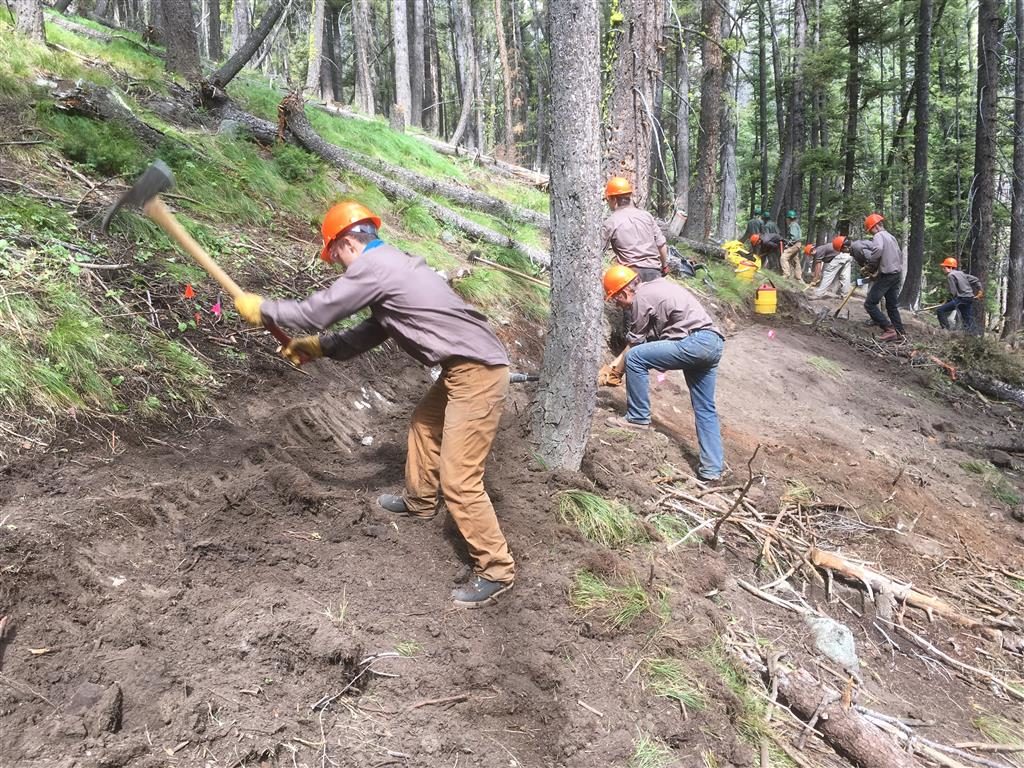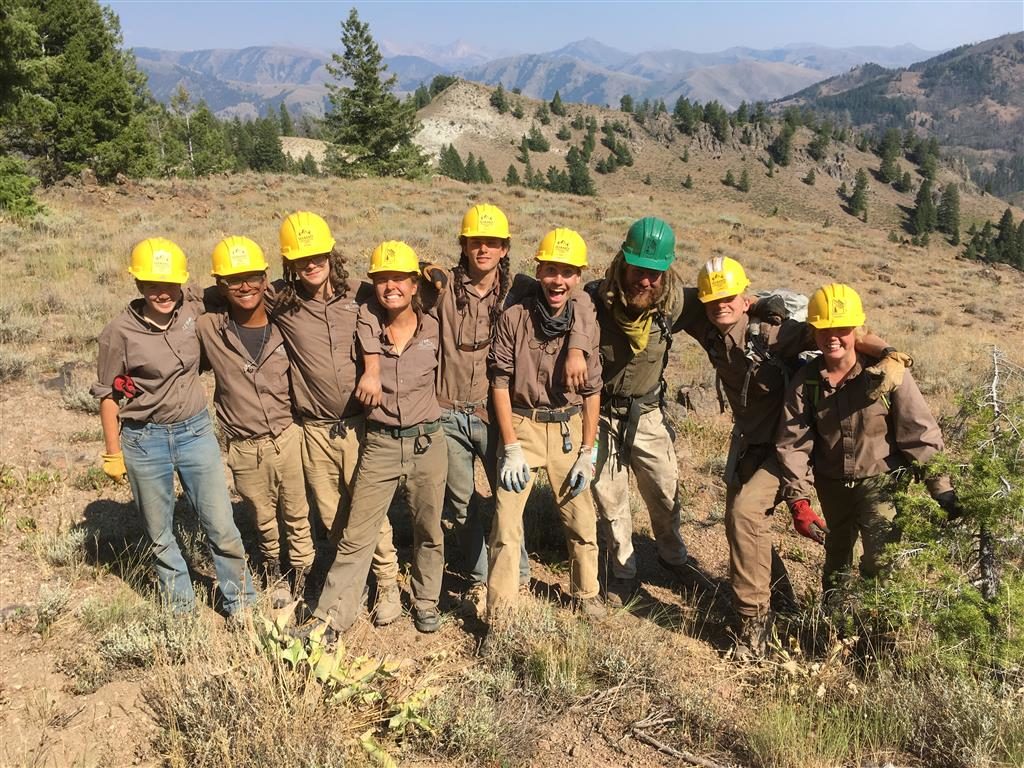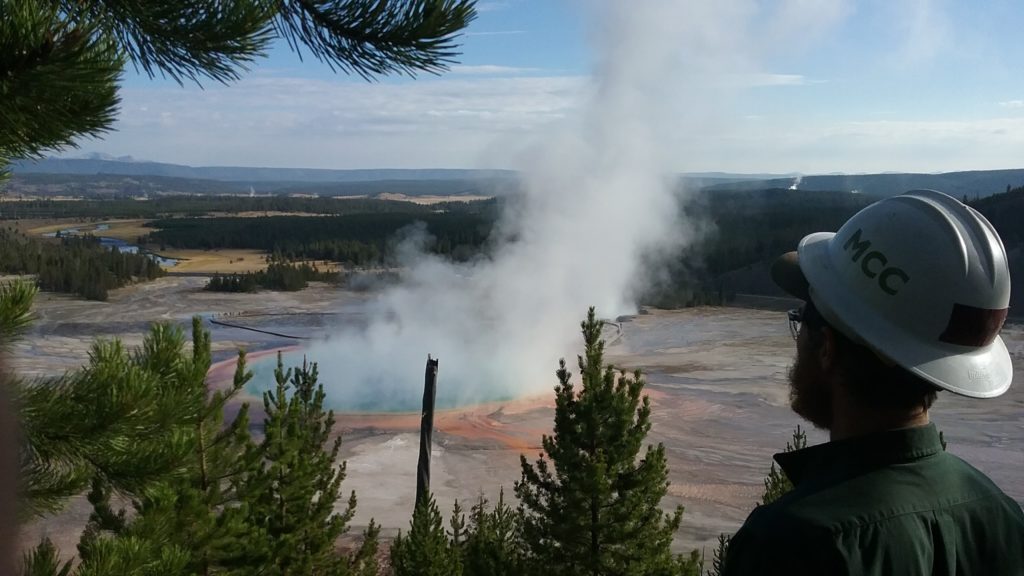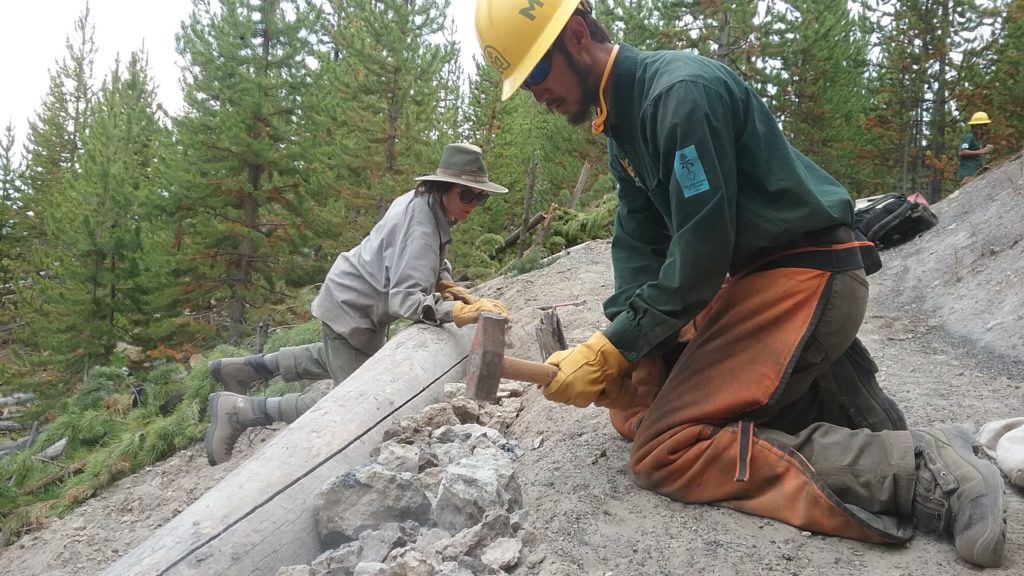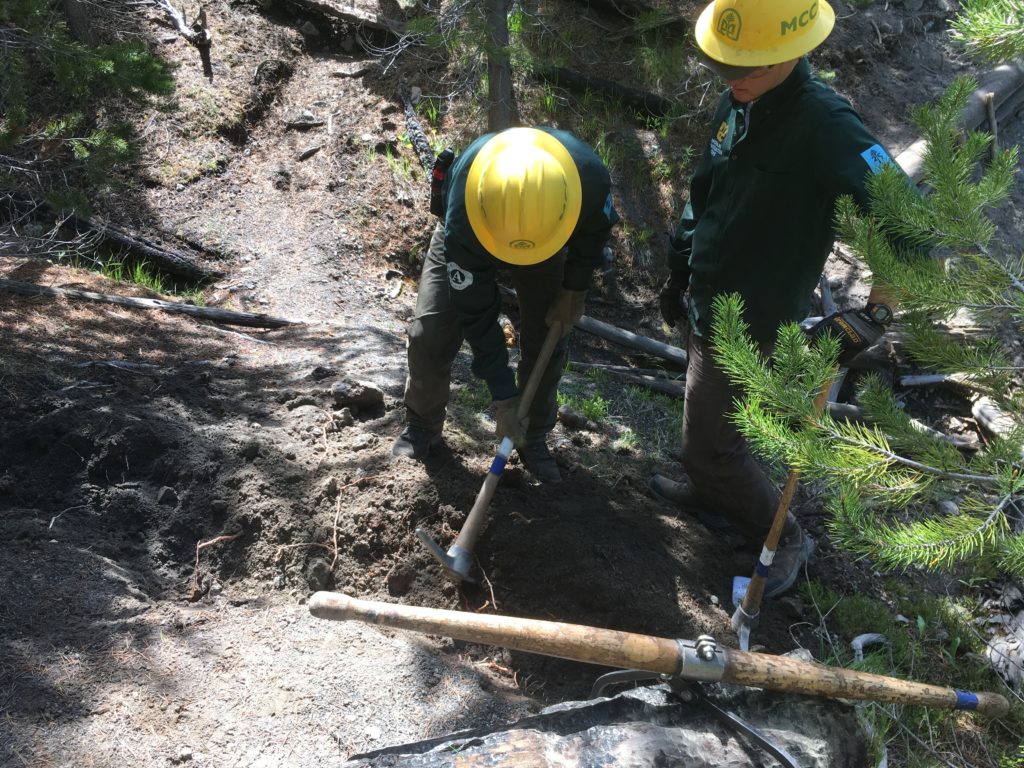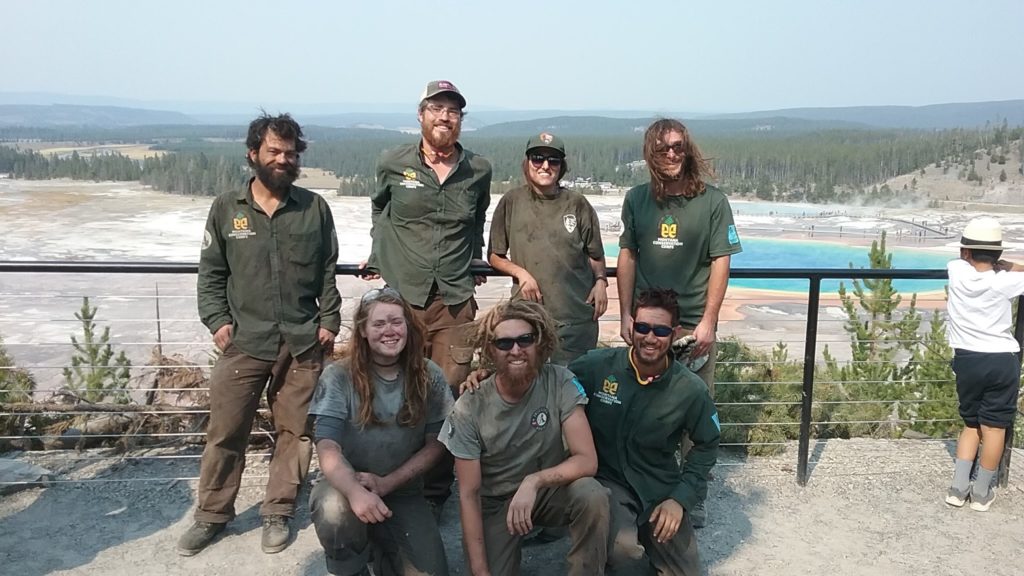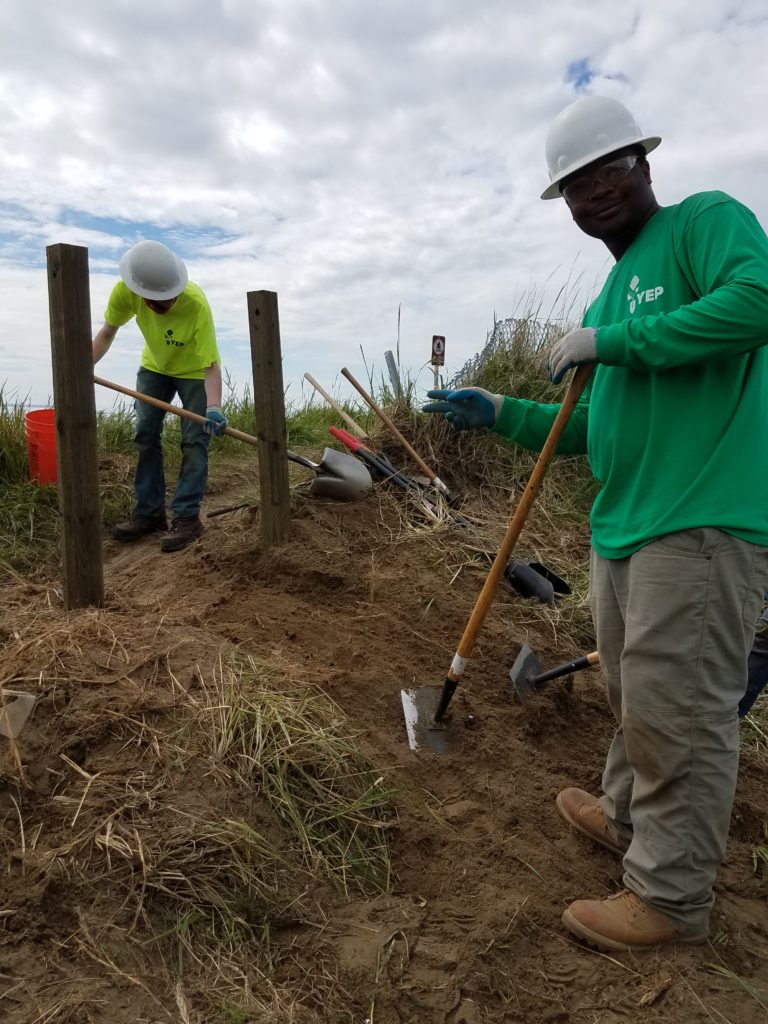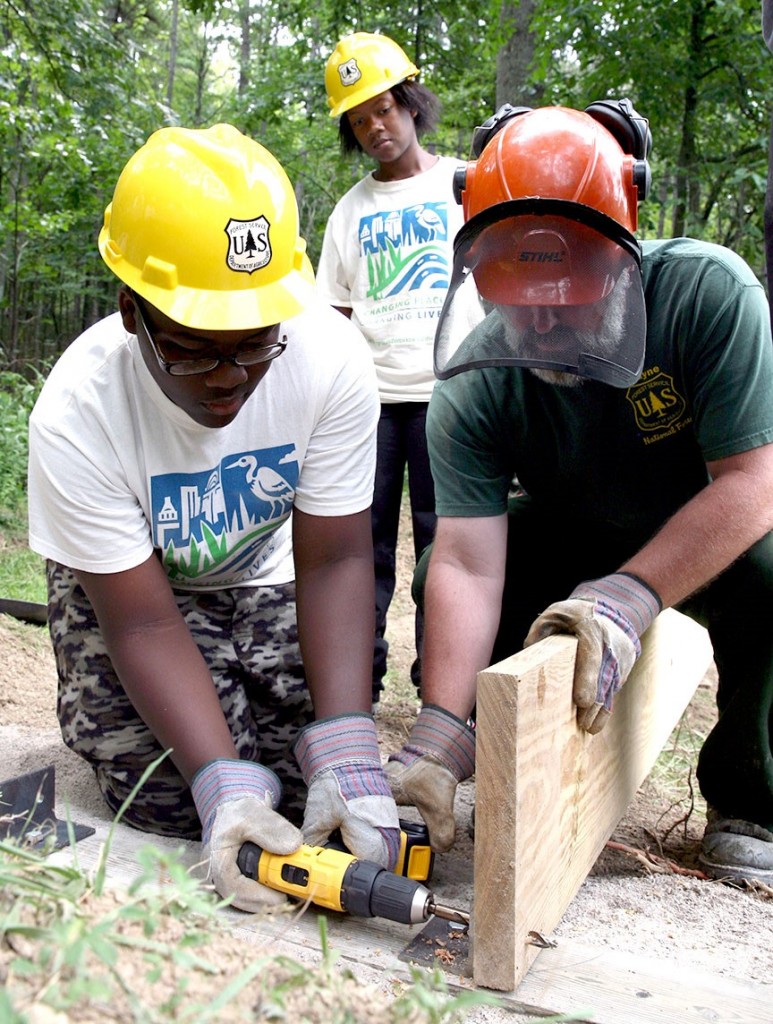The Sawtooth National Forest covers over 2 million acres, predominately across south central Idaho. With a variety of habitats, 10 mountain ranges, and more than 1,000 lakes, the forest is a popular recreation destination.
Outdoor recreation is the main economic driver in many communities in and around the forest. To keep tourists coming, it is essential to maintain the region’s trails, camp sites, and other recreation-related infrastructure. This past summer, youth serving with Idaho Conservation Corps (ICC) – a program of Northwest Youth Corps – performed much-needed maintenance on the Oregon Gulch Trail, a popular route in Ketchum, ID for biking, hiking, horseback riding and motorsports.
The Corps participants, who ranged in age from 16 – 18, were part of ICC’s Youth Corps camping program. This program gives teenagers the opportunity to gain hands-on work experience by spending five weeks travelling throughout Idaho to perform important maintenance and improvement projects on public lands. Work on the Oregon Gulch Trail was completed by two ICC crews during July and August 2017.
With drainage issues and sections of heavy rutting, the trail was in need of attention. To better understand the needs of trail users, Corps participants had the chance to experience the Oregon Gulch Trail on mountain bikes. Then, working alongside the professional Ketchum Trail Crew, based out of Sawtooth National Forest, the ICC members learned the processes involved in laying out a new trail and designing features to increase trail complexity for riders.
Using ten-pound pick-mattocks, the two ICC crews completed over 2,000 hours of service on the trail. They improved 50 drainage structures, restored one mile of existing trail, and constructed roughly a mile of new trail to route around a section that was rutted beyond repair.
With guidance from the professional trail crew, the Corps participants learned and practiced skills to build a quality trail. They also learned many intangible lessons.
“This crew started the season working as individuals, separated by interests, backgrounds and skill levels. Through this project, they learned to work as a cohesive team, sharing in the difficult aspects of digging a trail through rock, and keeping each other hydrated in the heat of an Idaho summer,” said Ari Songer, ICC Program Coordinator, “They will take with them a strong work ethic, resiliency when faced with challenge and an appreciation for the power of teamwork.”
A reflection from an ICC member:
This experience meant an opportunity to discover one’s true self without the boundaries placed upon us by society.
This experience has been a gateway to self-discovery in its purest form.
For many of us, life is a cardboard box; a box of social groups, cultural norms, identity boundaries, and restriction of expression. Every now and again, the wind blows and the box tumbles head-over-heels, allowing us a brief glimpse of our true nature and the nature of the world around us.
But, almost always, the box lands open side down.
This program reminds us that we are strong enough to “break through the cardboard.” This adventure gives us the opportunity to separate ourselves from the cycles that dis-empower us. The only thing preventing you from being your true self is the illusion of disempowerment perpetuated by these cycles.
Take a second to reflect on your experience, and, if you realize nothing else, realize that none of this is possible alone.
Thank you to Ariana Songer of Idaho Conservation Corps for providing information for this story.

